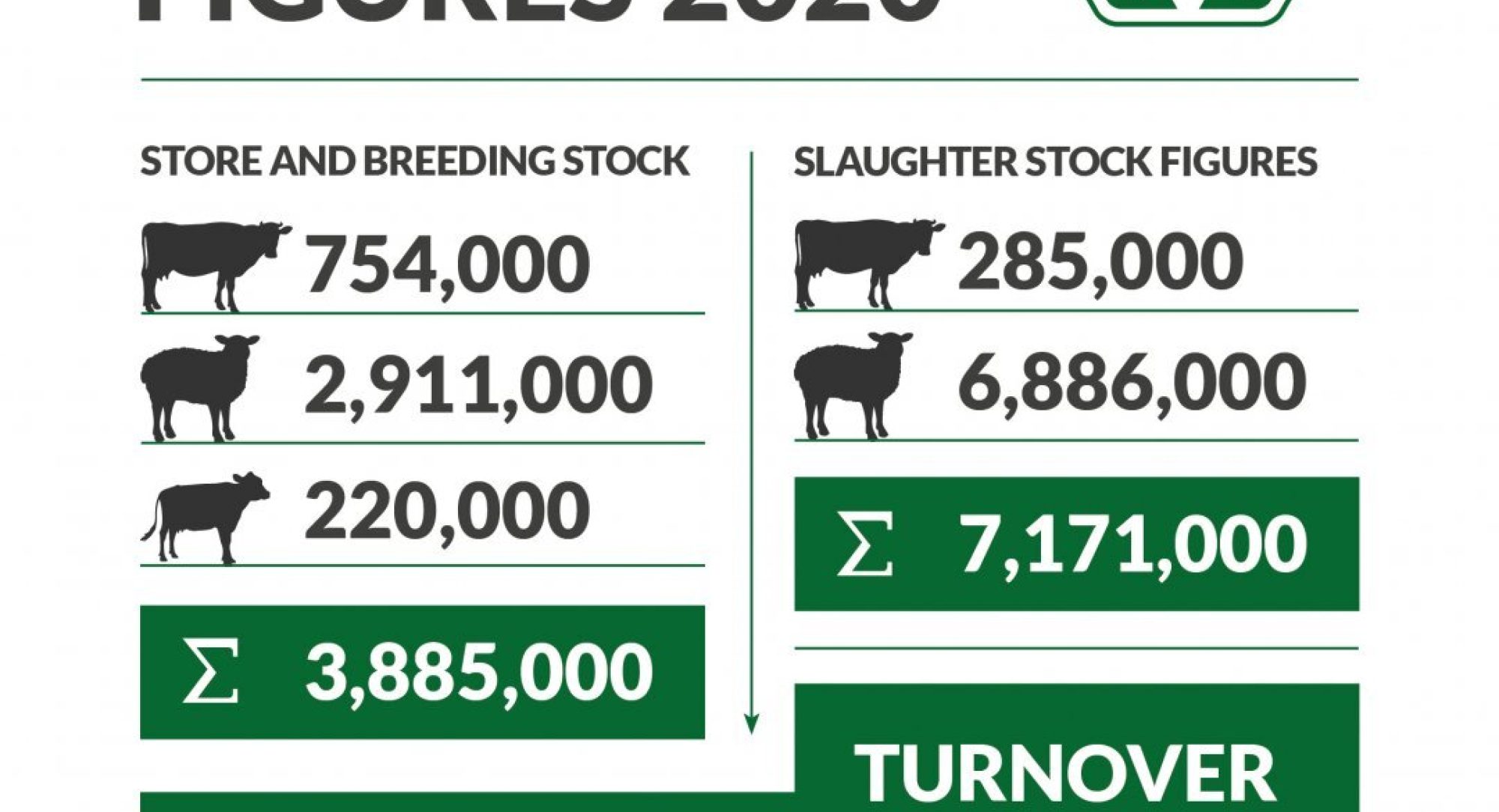The essential role of the live auction system in setting trends and prices has been recognised in annual throughput figures released by the Livestock Auctioneers’ Association (LAA), showing well over 11 million animals sold through the live sales ring in England and Wales in 2020, with turnover topping £1.8bn.
The figures represent an increase in almost every sector over 2019 numbers, despite the unprecedented challenges of Covid-19, and a drop in production numbers in some categories.
Up from 10.7 million across all species in 2019, the latest figures include just under 10 million sheep and over 1 million cattle sold through the live system, as farmers turn to the livestock market to achieve best prices for their stock.
Total cattle sales pushed well over the 1 million-barrier, an increase of 30,000 over 2019, with overall sheep sales up 370,000 year on year.
Significantly, despite Defra figures revealing a 3.7% drop in overall mutton and lamb production, and a 15% drop in slaughter numbers for ewes and rams, slaughter stock numbers for sheep sold through the live markets have increased by almost 5% to over 6.8 million.
Calf numbers have risen by 10,000, up to 220,000, demonstrating how markets have adapted and align with the GB Dairy Calf Strategy, continuing to represent the largest viable marketplace for all calves.
It is perhaps the significant increase in turnover that truly reflects the value of the live system, with an increase of over £260m, taking total turnover to £1.8bn.
These hugely impressive figures should nevertheless be off-set against the considerable increase in staffing and market operational costs, managing and policing bio-secure sales environments, including the stringent additional Covid-19 protocols in place that has meant the markets have remained open for business.
“The increased throughputs have been phenomenal, and this is in a large part due to the support, understanding and patience of our vendors and buyers, and in return the live sales ring is delivering strong market prices,” explains LAA executive secretary Chris Dodds.
The live markets have pulled in more small and medium sized retailers and butchers during the challenges of the pandemic, by ensuring that the right stock is in place for them. In many respects, this has set the footprint for the future, with marts seeing lots of returning buyers and vendors to the live sales ring.
“The farming fraternity can see they can get much more for their stock through the live sales ring, with the competition and fair prices reflecting the demand against availability,” adds Bob Mosley, the recently appointed LAA chairman, “The last 12 months have really shown the value of the auction system.”
Livestock markets have adopted many new approaches to maintain a safe and secure environment for buying and selling livestock, and the introduction of new technology will also likely be a feature that will continue to add to the future success of the live sales system.
“Many markets are introducing real-time, online bidding platforms during their live sales, facilitating an opportunity to participate, for those not able to be physically on site during the day,” says Mr Dodds.
Timed online sales have also provided a workable solution when traditional live sales could not take place, proving particularly effective in machinery sales.
“Providing this opportunity for live, distance-bidding is a strong add-on to the core business of our members, providing a competitive and transparent environment to achieve a true and fair price for livestock,” adds Mr Dodds.
Mr Mosley concludes, by adding, “The live sales ring has demonstrated, particularly through the challenges of Covid-19, that it provides the platform to meet the demand of the retailer and consumer, while achieving the true price for the vendor, and we will continue to invest in the future on behalf of the industry.”
